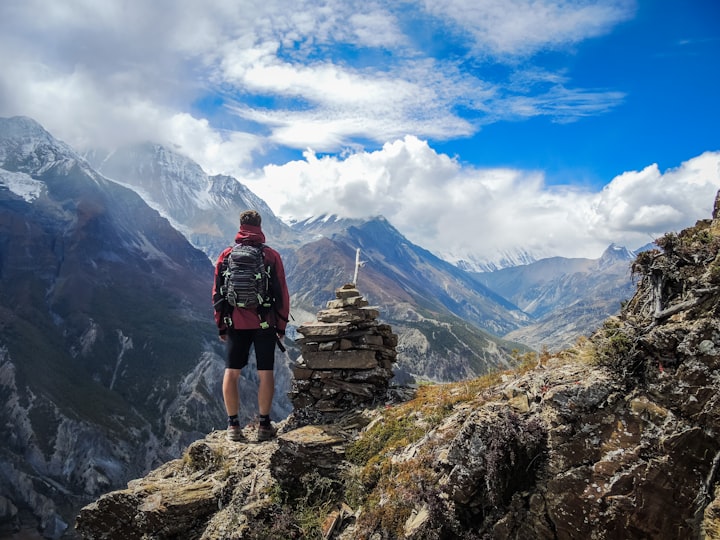5 Mystical Facts About Scotland
History Behind Myths, Folklore & Legends

I’ve recently become intrigued with ancient folklore of the Scottish Highlands and how these stories have lasted so long throughout the ages. What piece of truth began these tales that have been told, some for over 1,000 years? How is a story like that even created? How has it survived through changing culture and technology yet, still capture the imagination of its listeners? Let’s find out.
1. Loch Ness Monster
One of the most famous legends from this area of the world is of the Loch Ness Monster. This creature reportedly has inhabited the area of Loch Ness in the Scottish Highlands for about the past 1,500 years. It was said that the giant beast leapt from the water of a lake near Inverness and gobbled up a local farmer. They myth has only grown from there.
More recently, in 1934, a doctor supposedly took a picture of the monster that looked similar to a dinosaur emerging from the water. This lead to dozens of other sightings around this time. Even in 2009, a newspaper claimed to have found ‘Nessie’ on Google Earth when the journalist was looking at pictures of the Loch Ness region.
One of the latest scientific efforts was by the BBC in 2003 who took a more technological approach to the myth. They sponsored a search of the area using satellite tracking and 600 sonar beams yet, came up empty handed.
Regardless of how this story came to be and what monster may still lurk in the lake, Loch Ness still is one of Scotland’s most popular tourist attractions. Thousands of people visit the famed shores and the lakeside exhibition center each year hoping to catch a glimpse of the Loch Ness Monster.
2. Robert the Bruce and the Spider
Certain sentences are heard all over the world. One famous phrase is “If at first you don’t succeed, try try and try again.”
This reportedly comes from Robert the Bruce who was born in 1274 at Lochmaben castle in Scotland. In 1306 he was crowned King of Scotland and tried to free his people from the English. After being defeated in his first year, he went into hiding in some caves along the shore.
Struggling for a new plan, legend has it that he watched a spider building a web. It was a difficult task because with each rain drop that landed on the thread, the spider had to fix the damage. If anyone has been to Scotland and seen the amount of rain that falls, they would know what a tremendous task this is. Finally, the spider completes the web which inspired Robert the Bruce to get up and fight again. This is where he first uttered that phrase said around the world.
3. The Stoor Worm
The creature named Mester Stoor Worm was a gigantic sea serpent that had horrible breath. It would contaminate the fields and destroy animals every Saturday morning. When it woke, it would yawn nine times and demand seven virgins for breakfast.
One king who had daughters put up a ransom for the beast, offering his daughter’s hand in marriage along with the kingdom and a magic sword to whoever slays the Stoor Worm. The son of a farmer called Assipattle completed the challenge. As the beast died, its teeth fell out to become the islands of Orkney, Shetland and the Faroes, and its body became Iceland.
The reasoning behind this tale is that during the enlightenment period of history, people were still sacrificing humans to monsters and beasts. This tradition faded with this story and others similar to the legend.
4. What is Under the Kilt?
There are many assumptions about what men wear under their kilts. The myth that Scots traditionally should not wear pants under their kilts is not written into law by any means. Linked to the Highland Regiments of the British Army, supposedly they required their soldiers who wore kilts to not wear underwear. This soon passed as a form of sexual harassment during uniform inspections though.
The truth behind this question dates back to the 16th century when men of Scotland began to wear kilts as a standard garment. Back then, very few people actually wore undergarments. Only royalty and aristocrats could afford those extra layers of clothing so the hunters and farmers generally did not wear underwear to begin with.
As traditional clothing began to include under clothes, this way of life lead to culture shock in other parts of the world which keeps this story in the forefront, questioning traditions for hundreds of years.
5. Tartans of the Clans
The tartan woven designs are another tradition within Scottish fashion that links to the history of the clans. Although the origins are a little unclear, there is evidence of these striped patterns being worn back as far as the Dark Ages of the Celtic people. This type of material would have been produced locally and those methods handed down through generations. Therefore, it is possible that the tribal or local distinct patterns may have existed.
Scottish Highland attire was banned by law in 1746 with The Act of Proscription which made the people lose touch with their traditional clothing.
‘An act for the more effectual disarming the highlands of Scotland; and for the more effectual securing the peace of the said highlands; and for restraining the use of the highland dress.’
About 100 years later though in 1822, there was a resurgence of the traditions. George IV visited Edinburgh and the local clans tried to find these traditional patterns to identify their districts and to protect their heritage. The suppression of Highland dress though meant that in many cases the traditional link between the Highlander and tartan was broken and the traditional weaving techniques were largely forgotten. The visit increased the king's popularity in Scotland, which helped with rebellious radicalism of the time. However, it was Sir Walter Scott's inclusion of a tartan pageantry, which elevated the tartan kilt to become a part of Scotland's national identity.
About the Creator
Vicky DiMichele
Travel blogger, author and wine lover who loves creativity in all aspects of life.
@genxluxetravel & @graphixmgr






Comments
There are no comments for this story
Be the first to respond and start the conversation.